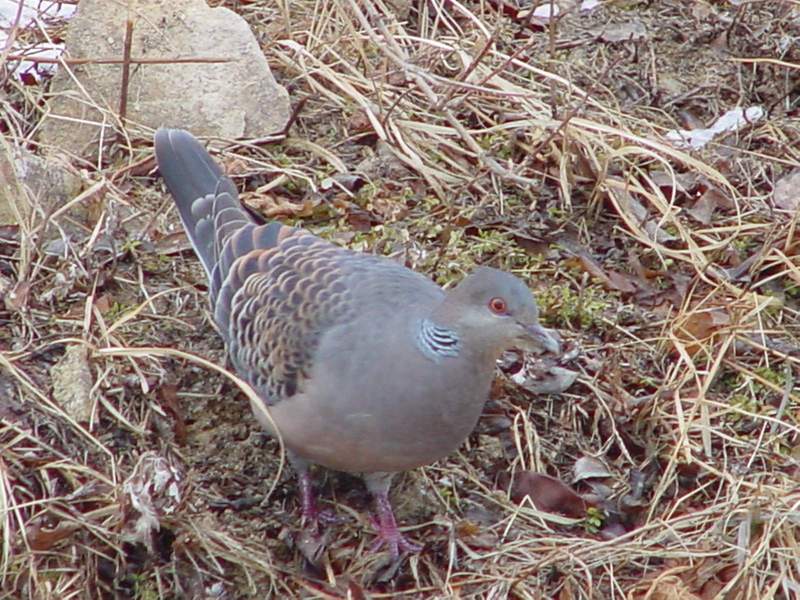|
| Query: Birds of europe | Result: 613th of 1706 | |
Rufous Turtle Dove
| Subject: | Rufous Turtle Dove
| | Poster: | Jinsuk Kim (kusnij@naver.com)
| |

| Resolution: 1600x1200
File Size: 286082 Bytes
Upload Date: 2004:04:29 19:24:24 |
Rufous Turtle Dove (Streptopelia orientalis orientalis / Columbidae)
Taken at Kabchon, Daejeon, Korea
Oriental Turtle Dove (Streptopelia orientalis) is a member of the bird family Columbidae, doves and pigeons. It has two distinctive races, S. o. orientalis in the central Siberian taiga, and S. o. meena in open woodland in central Asia. Two white eggs, as for all pigeons and doves, are laid in a twig nest in a tree. Southern most populations are resident, but most other birds migrate south to winter in India, southeast Asia, and southern Japan. This species is a rare vagrant to northern and western Europe. S. o. orientalis occurs as a rarity in western Alaska and British Columbia.
멧비둘기, 비둘기과(Columbidae) - 대전 유성 갑천 (유성구청앞) |
^o^
Animal Pictures Archive for smart phones
^o^
|
|